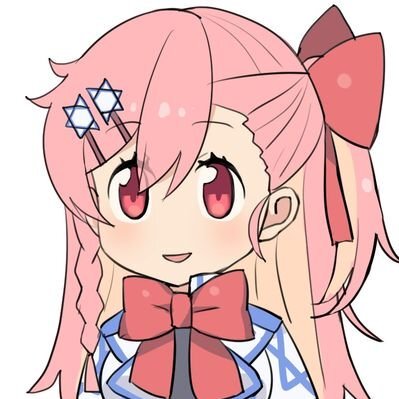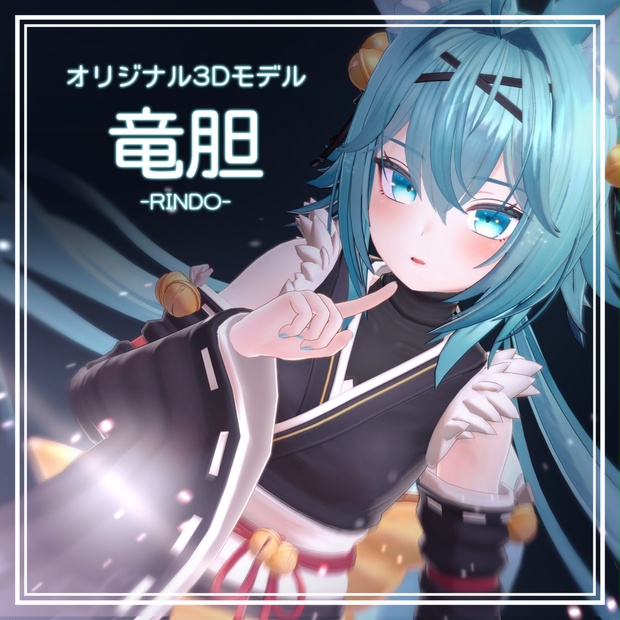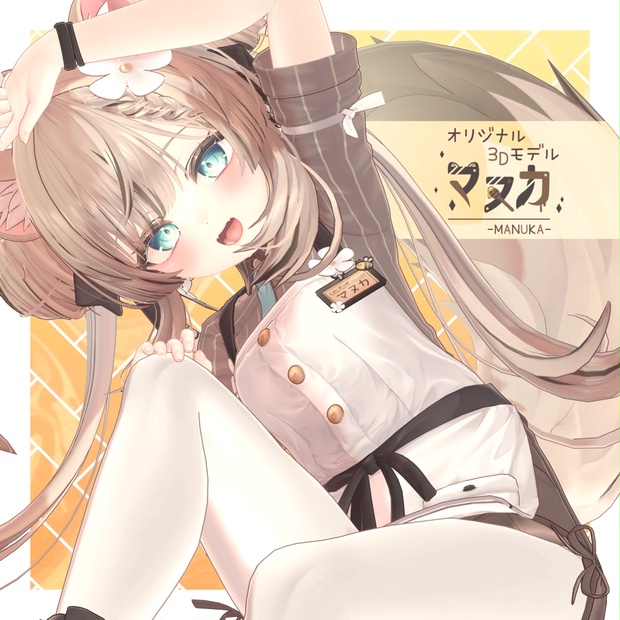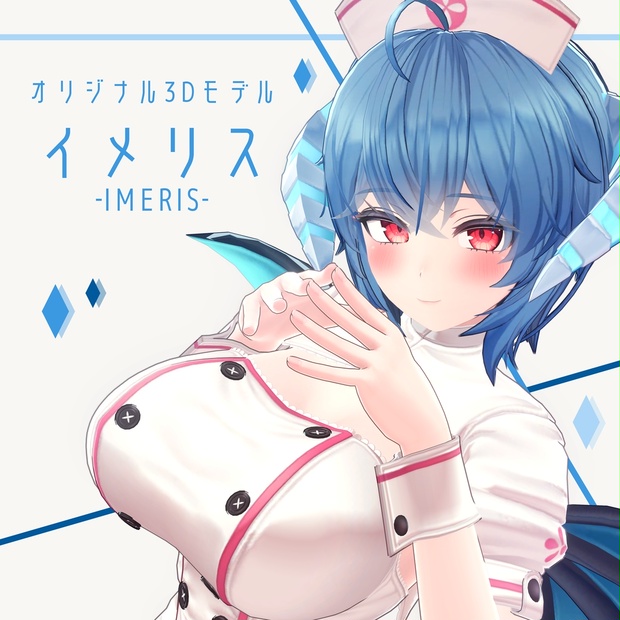流行るデザインに国は関係ない?世界中から選ばれるアバターデザインの作り方
アバタークリエイターになろうとは思っていなかった
── アバタークリエイターを始めたきっかけは?

実は最初から「アバタークリエイターになろう!」という素晴らしい心構えで始めたわけではありません。
元々学生時代から二次創作イラストを描いていて、ときどき韓国のコミケのようなイベントで同人グッズを販売していました。
ただ、2020年頃、コロナ禍の影響でオフラインイベントに参加できなくなってしまったんです。
だからちょうどVRChatをプレイしてたこともあり、時間がある時に既存のアバターを少しずつ改変して楽しんでいました。
そのうちに欲が出てきて、Blenderにも手を出すようになり…。3Dに関する知識は全くなかったのですが、YouTubeやインターネット検索などで調べて学びました。
当時、「ドールズフロントライン」の「ネゲヴ」というキャラクターが大好きだったので、最初は「ネゲヴ」の二次創作3Dモデルを販売するかたちでBOOTHを始めました。(二次創作の許可を得て販売しました)
── アバタークリエイターとして仕事をしていてよかったと思うことはありますか?

周囲に振り回されやすいタイプだし、一人で何かに挑戦することはほとんどなかったので正直怖かったです。
でも本当に運が良く、最初からたくさんの方々に喜んでいただけたので、今まで続けられました。
一人で作業するのも性に合っているようで、おかげで自分の好きなことを続けられて嬉しいです。
「かわいいもの」はいつでも最強
── ジンゴさんのアバターデザインはどのように構築されていきましたか? 影響を受けた作品などあれば教えてください

アバターデザインは私が好きなものから少しずつ影響を受けています。
多分気づいている方はほとんどいないと思いますが……。「竜胆」は「デ・ジ・キャラット:でじこ」、 「イメリス」は「原神:甘雨」+「ひぐらしのなく頃に:羽入」の影響を受けました。
「マヌカ」の場合は、「リコリス・リコイル」に登場する「喫茶リコリコ」の伝統茶屋コンセプトが気に入ったので、カフェの店長コンセプトにしました。
── 現在のアバター市場でのデザイントレンドはどのようなデザインだと思いますか?

ディテールが派手な衣装やアクセサリー、メイク、ネイルなどに今のところトレンドが見えます。
── 日本と韓国でトレンドの違いはあると思いますか?

人々のSNS活動が活発になって、各国のコンテンツに簡単にアクセスできるようになりました。
そのためか、国に関係なく「流行るスタイル」というものが生まれるように感じています。
個性を強くしすぎない
── 新しいアバターキャラクターのアイデアはどうやって思いつきますか?

だいたい大体アバターのリリース日から1年くらい前に、メインカラーやキャラクターの職業、世界観などのコンセプトが決めています。そこから少しずつ修正を加えていく流れです。
── 制作の際、最も注力するフローはどこですか?

── ファンからのフィードバックを取り入れますか?

個別のフィードバックよりも、全体的な傾向を見ながら少しずつ反映します。
「イメリス」ちゃんがその代表的な例ですね。特に顔に関する意見が多く、流行の変化もあって私も少し古いと感じたので、顔の比率を若干修正しました。
── これまで恐喝被害や、アバターのガイドラインに違反した利用をされるなど、いくつもの苦労をされてきたと思います。それらを経験されてなお、前向きに活動できるのはなぜでしょうか?

── 韓国ではVRChat以外も含めどのようなシーンでアバターが利用されていますか?

韓国ではVRChatを除けば、VTuber活動のための使用が最も多いようです。また、VRChatとVTuber活動を一緒に行っている方も多いように思います。
── 韓国は様々な国の中でも特にアバター利用が活発な国だと思います。なぜだと思いますか?

── 日本のクリエイターが韓国のユーザーへアバターを届けるためにはどんな工夫が必要ですか? 見せ方、届け方などアドバイスをお願いします

「なぜ人々はこれが好きなのか?」を考える
── アバター制作を志す人へのアドバイスはありますか? 初心者はまず何から始めたらいいでしょうか

私も専門的に3Dの知識を学んだわけではないし、今もまだまだ勉強が必要な状態ですが、世の中にはBlenderのように本当に良い無料ソフトウェアもありますし、YouTubeやインターネットなどで3D関連の情報に簡単にアクセスできます。
── アバタークリエイターとして成功するために必要なスキルや資質は何だと思いますか?

また商業モデルを主力にしたい場合、ひとりの個人のためのモデルではないということ、そして大衆に伝わるモデルであるということを念頭に置いて流行や利便性について気を遣うことが重要だと思います。
それと、単純に流行を追いかけるだけで終わらせるよりは「なぜ人々はこれが好きなのか?」など、理由を常に考えています。
今後の計画について
── 将来的に自分のブランドや作品をどんなものにしていきたいですか?

今後の目標について詳しく考えてはいません。
趣味で始めたモデリングで、ここまで多くの期待を受けることになるとは思っていなかったので……。
デザインから制作、販売まで全て一人で作業しているので、これだけでも時間が足りないと感じており、今のところ規模をさらに拡大するつもりはありません。
それでも、これまで作ったオリジナルキャラクターたちがいるので、素朴に自分が欲しい商品の制作をしてみたいです。
時間的に余裕ができたら少しずつ挑戦してみたいですね!
── 新作アバターや、今後の展開について告知はありますか?

新作アバターのデザインについて、詳しくはまだ言えませんが、去年から少しずつ準備している子がいます!
まだどこにも公開していない状態で、何度も修正を重ねて最近最終デザインと名前が決まりました。普段作っているモデルとは違う感じを出したかったので、今回はかなり挑戦的な感じです。
果たして3Dで私が望む感じに具現化できるのか……心配がかなり大きいです。



